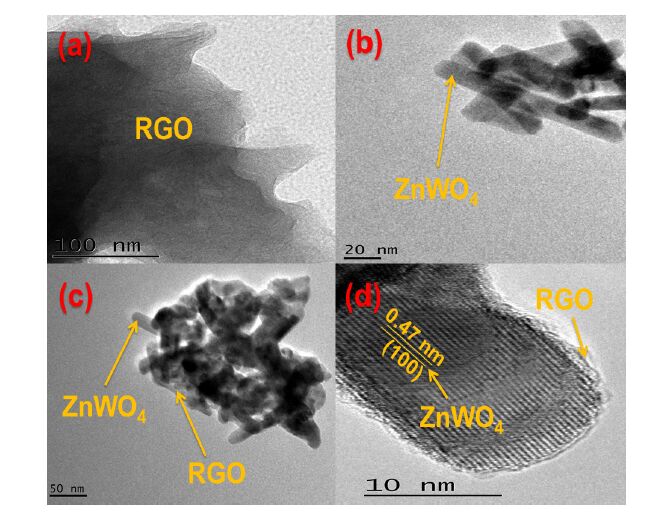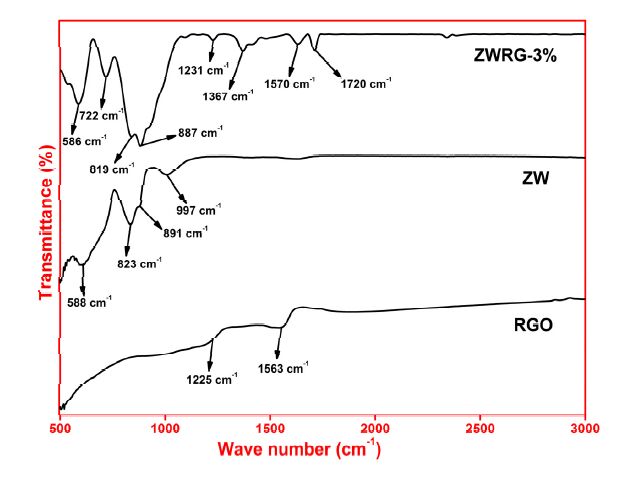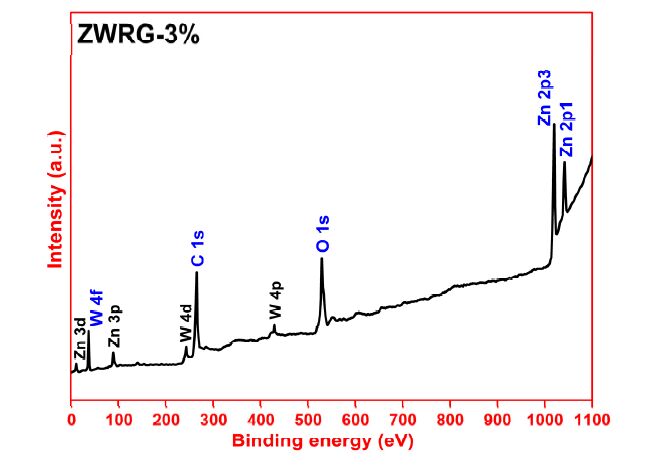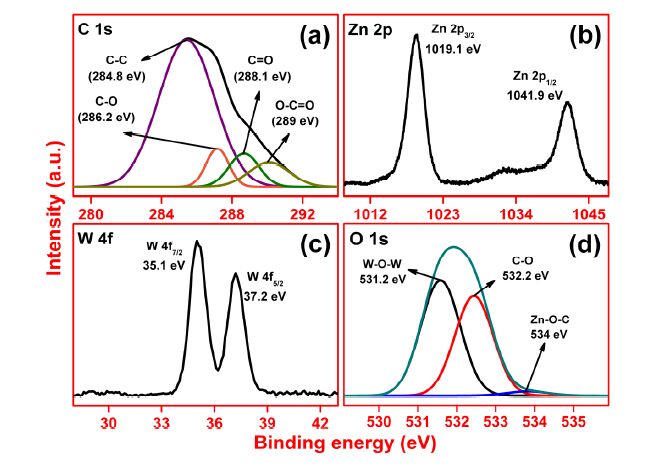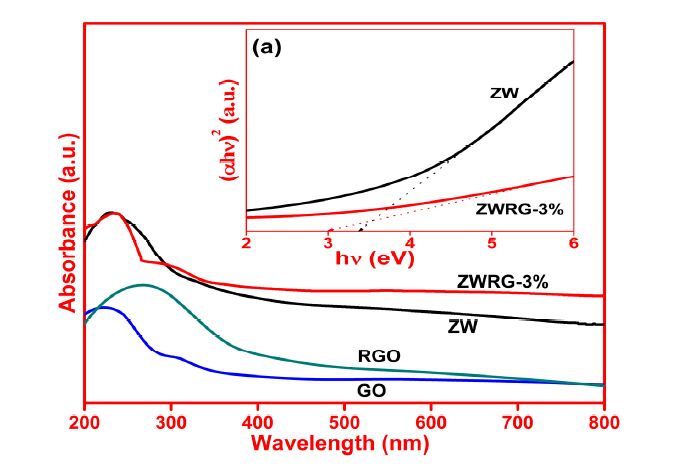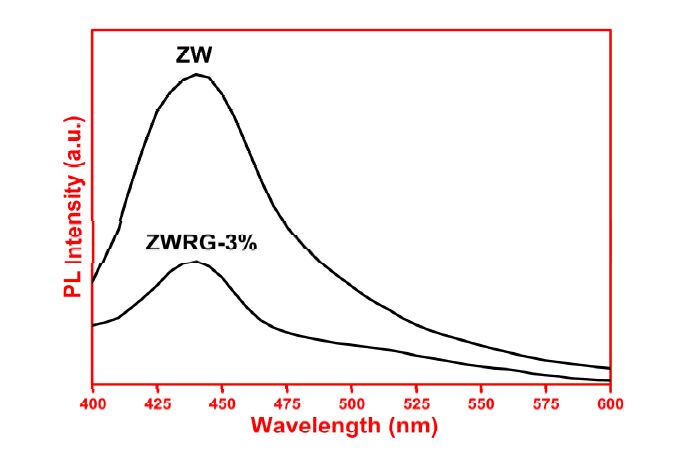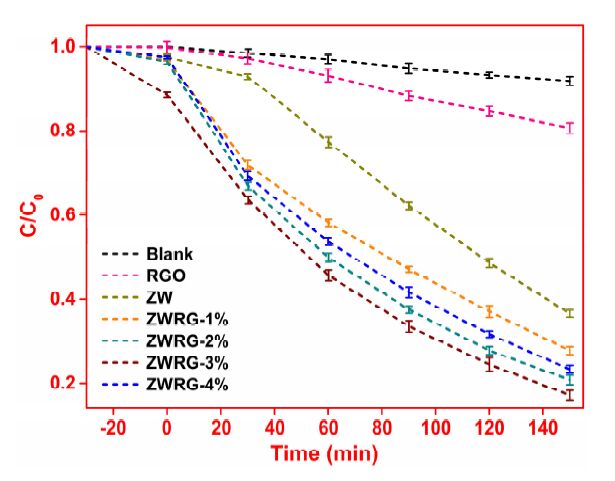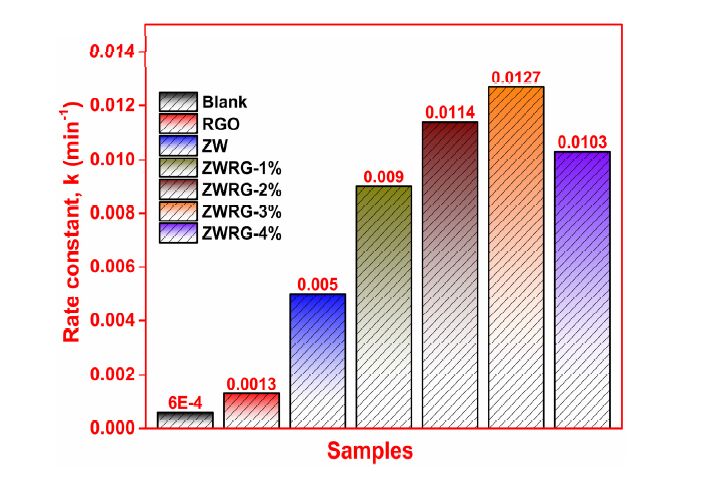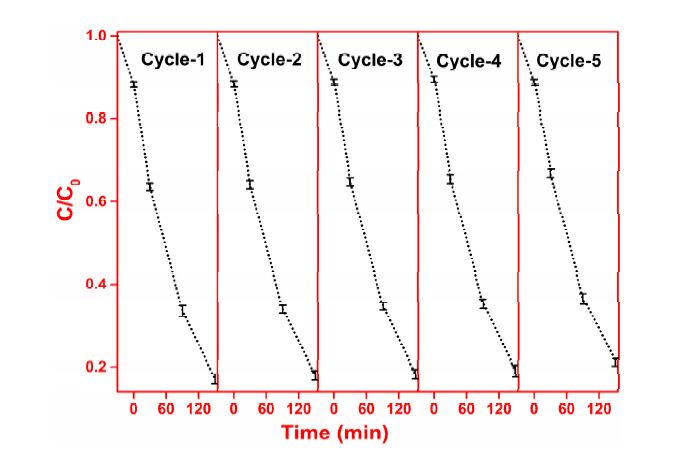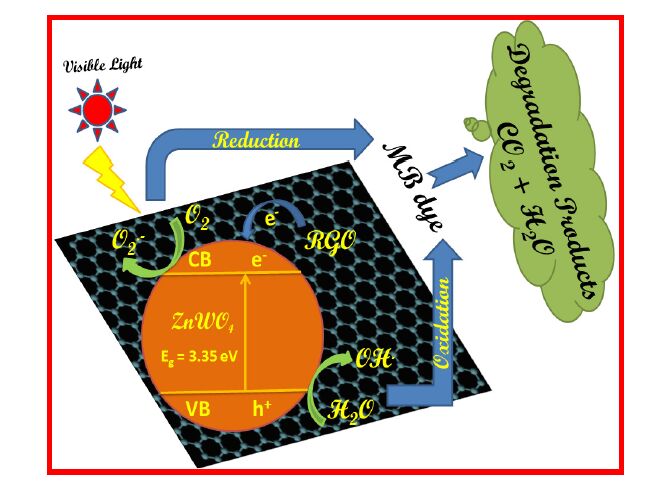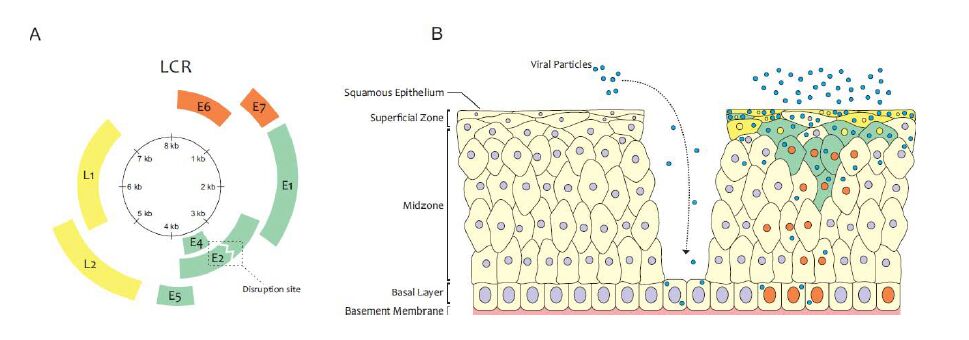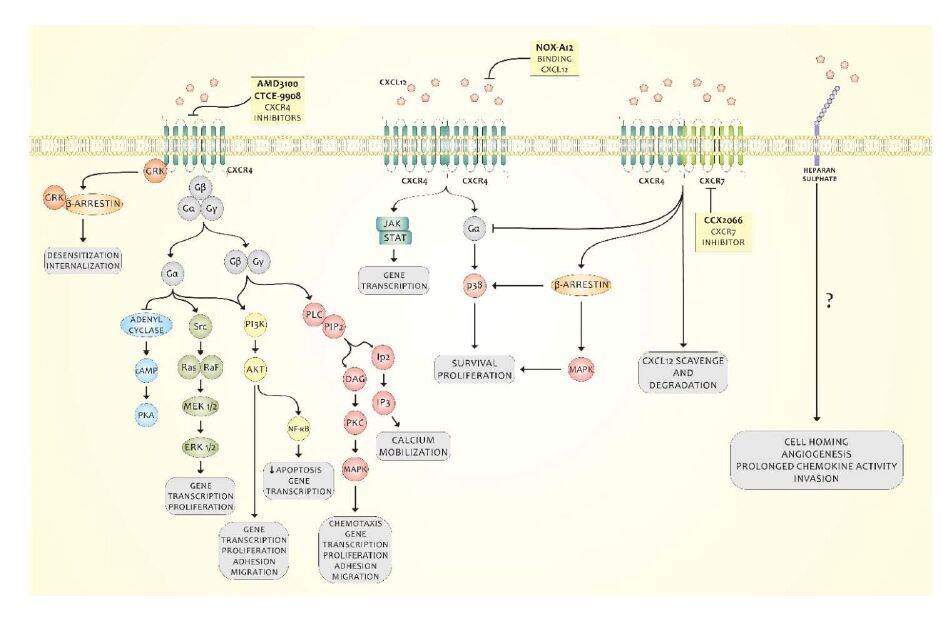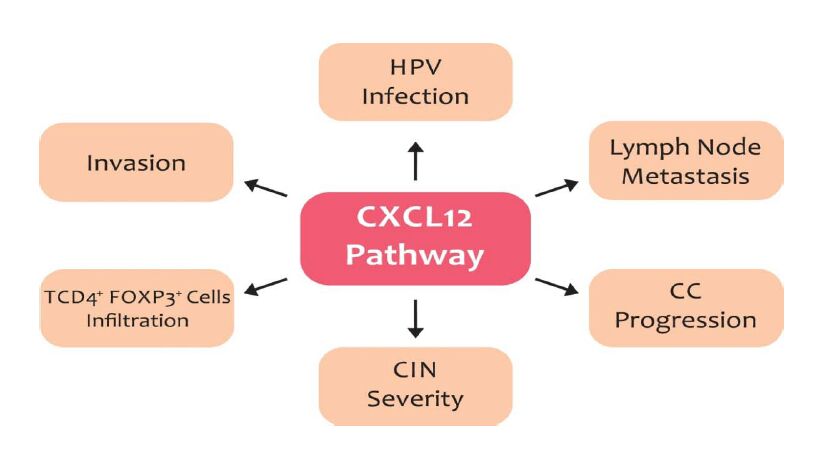|
[1]
|
BRASIL. Estimativa 2016: Incidência de Câncer no Brasil. INCA 2015.
|
|
[2]
|
Torre LA, Bray F, Siegel RL, et al. (2015) Global Cancer Statistics, 2012. CA a cancer J Clin 65: 87-108. doi: 10.3322/caac.21262

|
|
[3]
|
Walboomers JMM, Jacobs MV, Manos MM, et al. (1999) Human Papillomavirus Is a Necessary Cause Of Invasive Cervical Cancer Worldwide. J Patholgy 189: 12-19.
|
|
[4]
|
Woodman CBJ, Collins SI, Young LS (2007) The natural history of cervical HPV infection: unresolved issues. Nat Rev Cancer 7: 11-22. doi: 10.1038/nrc2050

|
|
[5]
|
Smith JS, Lindsay L, Hoots B, et al. (2007) Human papillomavirus type distribution in invasive cervical cancer and high-grade cervical lesions: A meta-analysis update. Int J Cancer 121: 621-632. doi: 10.1002/ijc.22527

|
|
[6]
|
Lee LJ, Howitt B, Catalano P, et al. (2016) Gynecologic Oncology Prognostic importance of human papillomavirus (HPV) and p16 positivity in squamous cell carcinoma of the vulva treated with radiotherapy. Gynecol Oncol 142: 293-298. doi: 10.1016/j.ygyno.2016.05.019

|
|
[7]
|
Levovitz C, Chen D, Ivansson E, et al. (2014) TGFβ Receptor 1: An immune susceptibility gene in HPV-associated cancer. Cancer Res 74: 6833-6844. doi: 10.1158/0008-5472.CAN-14-0602-T

|
|
[8]
|
Mai S, Welzel G, Ottstadt M, et al. (2015) Prognostic relevance of HPV infection and p16 overexpression in squamous cell anal cancer. Radiat Oncol Biol 93: 819-827. doi: 10.1016/j.ijrobp.2015.08.004

|
|
[9]
|
Egawa N, Egawa K, Griffin H, et al. (2015) Human Papillomaviruses; epithelial tropisms, and the development of neoplasia. Viruses 7: 3863-3890. doi: 10.3390/v7072802

|
|
[10]
|
Arbyn M, Sanjosé S de, Saraiya M, et al. (2011) EUROGIN 2011 roadmap on prevention and treatment of HPV- related disease. Int J Cancer 131: 1969-1982.
|
|
[11]
|
Doorbar J (2006) Molecular biology of human papillomavirus infection and cervical cancer. Clin Sci 110: 525-541. doi: 10.1042/CS20050369

|
|
[12]
|
Moody CA, Laimins LA (2010) Human papillomavirus oncoproteins : pathways to transformation. Nat Rev Cancer 10: 550-560. doi: 10.1038/nrc2886

|
|
[13]
|
Doorbar J (2013) The E4 protein —structure , function and patterns of expression. Virology 445: 80-98. doi: 10.1016/j.virol.2013.07.008

|
|
[14]
|
DiMaio D, Petti LM (2013) The E5 proteins. Virology 445: 99-114. doi: 10.1016/j.virol.2013.05.006

|
|
[15]
|
Beaudenon S, Huibregtse JM (2008) HPV E6 , E6AP and cervical cancer. BMC Biochem 7: 1-7.
|
|
[16]
|
Zhou W, Slingerland JM (2014) Links between oestrogen receptor activation and proteolysis : relevance to hormone-regulated cancer therapy. Nat Rev Cancer 14: 26-38.
|
|
[17]
|
zur Hausen H (2009) Papillomaviruses in the causation of human cancers—a brief historical account. Virology 384: 260-265. doi: 10.1016/j.virol.2008.11.046

|
|
[18]
|
Schiffman M, Castle PE, Jeronimo J, et al. (2007) Human papillomavirus and cervical cancer. Lancet 370: 890-907. doi: 10.1016/S0140-6736(07)61416-0

|
|
[19]
|
Schiffman M, Wentzensen N (2013) Human Papillomavirus Infection and the Multistage Carcinogenesis of Cervical Cancer. Cancer Epidemiol Biomarkers Prev 22: 553-560. doi: 10.1158/1055-9965.EPI-12-1406

|
|
[20]
|
Castellsagué X, Muñoz N (2003) Chapter 3: Cofactors in human papillomavirus carcinogenesis—role of parity, oral contraceptives, and tobacco smoking. J Nation Cancer Institute Monographs 31: 20-28.
|
|
[21]
|
Patel S, Chiplunkar S (2009) Host immune responses to cervical cancer. Curr Opin Obstet Gynecol 21: 54-59.
|
|
[22]
|
Mbeunkui F, Johann DJJr (2010) Cancer and the tumor microenvironment: a review of an essential relationship. Cancer Chemoter Pharmacol 63: 571-582.
|
|
[23]
|
Vandercappellen J, Van Damme J, Struyf S (2008) The role of CXC chemokines and their receptors in cancer. Cancer Lett 267: 226-244.
|
|
[24]
|
Baggiolini M (2001) Chemokines in pathology and medicine. J Intern Med 250: 91-104.
|
|
[25]
|
Griffith JW, Sokol CL, Luster AD (2014) Chemokines and chemokine receptors: positioning cells for host defense and immunity. Annu Rev Immunol 32: 659-702. doi: 10.1146/annurev-immunol-032713-120145

|
|
[26]
|
Pozzobon T, Goldoni G, Viola A, et al. (2016) CXCR4 signaling in health and disease. Immunol Lett 177: 6-15. doi: 10.1016/j.imlet.2016.06.006

|
|
[27]
|
Hanahan D, Weinberg RA (2011) Hallmarks of cancer: the next generation. Cell 144: 646-674.
|
|
[28]
|
Wani N, Nasser MW, Ahirwar DK, et al. (2014) C-X-C motif chemokine 12/C-X-C chemokine receptor type 7 signaling regulates breast cancer growth and metastasis by modulating the tumor microenvironment. Breast Cancer Res16: R54.
|
|
[29]
|
Bergers G, Benjamin LE (2003) Tumorigenesis and the angiogenic switch. Nat Rev Cancer 3: 401-410. doi: 10.1038/nrc1093

|
|
[30]
|
Tachibana K, Hirota S, Iizasa H, et al. (1998). The chemokine receptor CXCR4 is essential for vascularization of the gastrointestinal tract. Nature 393: 591-594. doi: 10.1038/31261

|
|
[31]
|
Funakoshi A, Jimi A, Yasunami Y, et al. (1989) CXCL8/IL8 stimulates vascular endothelial growth factor (VEGF) expression and the autocrine activation of VEGFR2 in endothelial cells by activating NFkappaB through the CBM (Carma3/Bcl10/Malt1) complex. Biochem Biophys Res Commun 159: 913-918. doi: 10.1016/0006-291X(89)92195-5

|
|
[32]
|
Martin D, Galisteo R, Gutkind JS (2009) CXCL8/IL8 stimulates vascular endothelial growth factor (VEGF) expression and the autocrine activation of VEGFR2 in endothelial cells by activating NF-κB through the CBM (Carma3/Bcl10/Malt1) complex. J Biol Chem 284: 6038-6042. doi: 10.1074/jbc.C800207200

|
|
[33]
|
Nguyen DX, Bos PD, Massagué J (2009) Metastasis: from dissemination to organ-specific colonization. Nat Rev Cancer 9: 274-284. doi: 10.1038/nrc2622

|
|
[34]
|
Zlotnik A, Burkhardt AM, Homey B (2011) Homeostatic chemokine receptors and organ-specific metastasis. Nat Rev Immunol 11: 597-606.
|
|
[35]
|
Muller A, Homey B, Soto H, et al. (2001) Involvement of chemokine receptors in breast cancer metastasis. Nature 410: 50-56.
|
|
[36]
|
Terasaki M, Sugita Y, Arakawa F, et al. (2011) CXCL12/CXCR4 signaling in malignant brain tumors: a potential pharmacological therapeutic target. Brain Tumor Pathol 28: 89-97.
|
|
[37]
|
Balkwill F (2004) Cancer and the chemokine network. Nat Rev Cancer 4: 540-550. doi: 10.1038/nrc1388

|
|
[38]
|
Zou W, Machelon V, Coulomb-L'Hermin A, et al. (2001) Stromal-derived factor-1 in human tumors recruits and alters the function of plasmacytoid precursor dendritic cells. Nat Med 7: 1339-1346. doi: 10.1038/nm1201-1339

|
|
[39]
|
Maksym RB, Tarnowski M, Grymula K, et al. (2009) The role of stromal derived factor-1-CXCR7 axis in development and cancer. Eur J Pharmacol 625: 31-40. doi: 10.1016/j.ejphar.2009.04.071

|
|
[40]
|
Wang J, Knaut H (2014) Chemokine signaling in development and disease. Development 12: 4199-4205.
|
|
[41]
|
Wang Z, Ma Q, Liu Q, et al. (2008) Blockade of SDF-1/CXCR4 signalling inhibits pancreatic cancer progression in vitro via inactivation of canonical Wnt pathway. Br J Cancer 99: 1695-1703. doi: 10.1038/sj.bjc.6604745

|
|
[42]
|
Ganju RK, Brubaker SA, Meyer J, et al. (1998) The a-Chemokine, stromal cell-derived factor-1a, binds to the transmembrane G-protein-coupled CXCR-4 receptor and activates multiple signal transduction pathways. J Biol Chem 273: 23169-23175. doi: 10.1074/jbc.273.36.23169

|
|
[43]
|
Bhandari D, Robia SL, Marchese A (2009) The E3 ubiquitin ligase atrophin interacting protein 4 binds directly to the chemokine receptor CXCR4 via a novel WW domain-mediated interaction. Mol Biol Cell 20: 1324-1339. doi: 10.1091/mbc.E08-03-0308

|
|
[44]
|
Mines MA, Goodwin JS, Limbird LE, et al. (2009) Deubiquitination of CXCR4 by USP14 is critical for both CXCL12-induced CXCR4 degradation and chemotaxis but not ERK activation. J Biol Chem 284: 5742-5752. doi: 10.1074/jbc.M808507200

|
|
[45]
|
Busillo JM, Benovic JL (2007) Regulation of CXCR4 signaling. Biochim Biophys Acta 1768: 952-963. doi: 10.1016/j.bbamem.2006.11.002

|
|
[46]
|
Cojoc M, Peitzsch C, Trautmann F, et al. (2013) Emerging targets in cancer management: role of the CXCL12/CXCR4 axis. Onco Targets Ther 6: 1347-1361.
|
|
[47]
|
Mellado M, Rodríguez-Frade JM, Mañes S, et al. (2001) Chemokine signaling and functional responses: the role of receptor dimerization and TK pathway activation. Annu Rev Immunol 19: 397-421. doi: 10.1146/annurev.immunol.19.1.397

|
|
[48]
|
Teicher BA, Fricker SP (2010) CXCL12 (SDF-1)/CXCR4 Pathway in Cancer. Clin Cancer Res 16: 2927-2931.
|
|
[49]
|
Graham GJ, Locati M, Mantovani A, et al. (2012) The biochemistry and biology of the atypical chemokine receptors. Immunol Lett 145: 30-38. doi: 10.1016/j.imlet.2012.04.004

|
|
[50]
|
Freitas C, Desnoyer A, Meuris F, et al. (2014) The relevance of the chemokine receptor ACKR3/CXCR7 on CXCL12-mediated effects in cancers with a focus on virus-related cancers. Cytokine Growth Factor Rev 25: 307-316. doi: 10.1016/j.cytogfr.2014.04.006

|
|
[51]
|
Veldkamp CT, Peterson FC, Pelzek AJ, et al. (2005) The monomer—dimer equilibrium of stromal cell-derived factor-1 ( CXCL 12 ) is altered by pH , phosphate , sulfate , and heparin. Protein Sci 1: 1071-1081.
|
|
[52]
|
Ray P, Lewin SA, Mihalko LA, et al. (2012) Secreted CXCL12 (SDF-1) forms dimers under physiological conditions. Biochem J 442: 433-442.
|
|
[53]
|
Wu B, Chien EY, Mol CD, et al. (2010) Structures of the CXCR4 Chemokine. Science 330: 1066-1071.
|
|
[54]
|
Kramp BK, Sarabi A, Koenen RR, et al. (2011) Heterophilic chemokine receptor interactions in chemokine signaling and biology. Exp Cell Res 317: 655-663.
|
|
[55]
|
Thelen M, Thelen S (2008) CXCR7, CXCR4 and CXCL12: An eccentric trio? J Neuroimmunol 198: 9-13. doi: 10.1016/j.jneuroim.2008.04.020

|
|
[56]
|
Laguri C, Arenzana-Seisdedos F, Lortat-Jacob H (2008) Relationships between glycosaminoglycan and receptor binding sites in chemokines-the CXCL12 example. Carbohydr Res 343: 2018-2023. doi: 10.1016/j.carres.2008.01.047

|
|
[57]
|
Rueda P, Balabanian K, Lagane B, et al. (2008) The CXCL12γ Chemokine Displays Unprecedented Structural and Functional Properties that Make It a Paradigm of Chemoattractant Proteins. Gold JA, editor. PLoS One 3: e2543. doi: 10.1371/journal.pone.0002543

|
|
[58]
|
Sadir R, Imberty A, Baleux F, et al. (2004) Heparan Sulfate/Heparin oligosaccharides protect stromal cell-derived factor-1 (SDF-1)/CXCL12 against proteolysis induced by CD26/dipeptidyl peptidase IV. J Biol Chem 279: 43854-43860.
|
|
[59]
|
Brule S, Friand V, Sutton A, et al. (2009) Glycosaminoglycans and syndecan-4 are involved in SDF-1/CXCL12-mediated invasion of human epitheloid carcinoma HeLa cells. Biochim Biophys Acta-Gen Subj 1790: 1643-1650.
|
|
[60]
|
Shirozu M, Nakano T, Inazawa J, et al. (1995) Struture and chromosomal localization of the human stromal cell-derived factor 1 (SDF1) gene. Genomics 28: 495-500.
|
|
[61]
|
Winkler C, Modi W, Smith MW, et al. (1998) Genetic restriction of AIDS pathogenesis by an SDF-1 chemokine gene variant. ALIVE Study, Hemophilia Growth and Development Study (HGDS), Multicenter AIDS Cohort Study (MACS), Multicenter Hemophilia Cohort Study (MHCS), San Francisco City Cohort (SFCC). Science 279: 389-393.
|
|
[62]
|
Feng L, Nian S, Hao Y, et al. (2014) A Single Nucleotide Polymorphism in the Stromal Cell-Derived Factor 1 Gene Is Associated with Coronary Heart Disease in Chinese Patients. Int J Mol Sci 15: 11054-11063. doi: 10.3390/ijms150611054

|
|
[63]
|
Reiche EMV, Ehara Watanabe MA, et al. (2006) The effect of stromal cell-derived factor 1 (SDF1/CXCL12) genetic polymorphism on HIV-1 disease progression. Int J Mol Med 18 785-793.
|
|
[64]
|
de Oliveira KB, Oda JMM, Voltarelli JC, et al. (2009) CXCL12 rs1801157 polymorphism in patients with breast cancer, hodgkin’s lymphoma, and non-hodgkin’s lymphoma. J Clin Lab Anal 23: 387-393. doi: 10.1002/jcla.20346

|
|
[65]
|
Cai C, Wang L-H, Dong Q, et al. (2013) Association of CXCL12 and CXCR4 gene polymorphisms with the susceptibility and prognosis of renal cell carcinoma. Tissue Antigens 82: 165-170. doi: 10.1111/tan.12170

|
|
[66]
|
Schimanski C, Jordan M, Schlaegel F (2011) SNP rs1801157 significantly correlates with distant metastasis in CXCL12 expressing esophagogastri c cancer. Int J Oncol 39: 515-920.
|
|
[67]
|
Razmkhah M, Doroudchi M, Ghayumi SMA, et al. ( 2005) Stromal cell-derived factor-1 (SDF-1) gene and susceptibility of Iranian patients with lung cancer. Lung Cancer 49: 311-315.
|
|
[68]
|
Hassan S, Baccarelli A, Salvucci O, et al. (2008) Plasma stromal cell-derived factor-1: host derived marker predictive of distant metastasis in breast cancer. Clin Cancer Res 14: 446-454.
|
|
[69]
|
Phillips RJ, Burdick MD, Lutz M, et al. ( 2003) The stromal derived factor–1/CXCL12–CXC chemokine receptor 4 biological axis in non–small cell lung cancer metastases. Am J Respir Crit Care Med 167: 1676-1686.
|
|
[70]
|
Dehghani M, Kianpour S, Zangeneh A, et al. (2014) CXCL12 modulates prostate cancer cell adhesion by altering the levels or activities of β1-containing integrins. Int J Cell Biol 2014: 981750.
|
|
[71]
|
Beider K, Bitner H, Leiba M, et al. (2014) Multiple myeloma cells recruit tumor-supportive macrophages through the CXCR4/CXCL12 axis and promote their polarization toward the M2 phenotype. Oncotarget 5: 11283-11296. doi: 10.18632/oncotarget.2207

|
|
[72]
|
Sei S, O’Neill DP, Stewart SK, et al. (2001) Increased level of stromal cell-derived factor-1 mRNA in peripheral blood mononuclear cells from children with AIDS-related lymphoma. Cancer Res 61: 5028-5037.
|
|
[73]
|
de Oliveira KB, Guembarovski RL, Oda JMM, et al. (2011) CXCL12 rs1801157 polymorphism and expression in peripheral blood from breast cancer patients. Cytokine 55: 260-265. doi: 10.1016/j.cyto.2011.04.017

|
|
[74]
|
Leiding JW, Holland SM (2012) Warts and all: human papillomavirus in primary immunodeficiencies. J Allergy Clin Immunol 130: 1030-1048. doi: 10.1016/j.jaci.2012.07.049

|
|
[75]
|
Chow KYC, Brotin É, Ben Khalifa Y, et al. (2010) A Pivotal Role for CXCL12 Signaling in HPV-Mediated Transformation of Keratinocytes: Clues to Understanding HPV-Pathogenesis in WHIM Syndrome. Cell Host Microbe 8: 523-533.
|
|
[76]
|
Bachelerie F (2010) CXCL12/CXCR4-axis dysfunctions: Markers of the rare immunodeficiency disorder WHIM syndrome. Dis Markers 29: 189-198. doi: 10.1155/2010/475104

|
|
[77]
|
Maciejewski-Duval A, Meuris F, Bignon A, et al. (2016) Altered chemotactic response to CXCL12 in patients carrying GATA2 mutations. J Leukoc Biol 99: 1065-1076.
|
|
[78]
|
Bignon A, Biajoux V, Bouchet-Delbos L, et al. (2011) CXCR4, a therapeutic target in rare immunodeficiencies? Med Sci (Paris) 27: 391-397. doi: 10.1051/medsci/2011274015

|
|
[79]
|
Maley SN, Schwartz SM, Johnson LG, et al. (2009) Genetic variation in CXCL12 and risk of cervical carcinoma: a population-based case-control study. Int J Immunogenet 36: 367-375. doi: 10.1111/j.1744-313X.2009.00877.x

|
|
[80]
|
Tee Y, Yang S-F, Wang P, et al. (2012) G801A Polymorphism of Human Stromal Cell–Derived Factor 1 Gene Raises No Susceptibility to Neoplastic Lesions of Uterine Cervix. Int J Gynecol Cancer 22: 1297-1302. doi: 10.1097/IGC.0b013e318265d334

|
|
[81]
|
Roszak A, Misztal M, Sowińska A, et al. (2015) Stromal cell-derived factor-1 G801A polymorphism and the risk factors for cervical cancer. Mol Med Rep 11: 4633-4638.
|
|
[82]
|
Jaafar F, Righi E, Lindstrom V, et al. (2009) Correlation of CXCL12 expression and FoxP3+ cell infiltration with human papillomavirus infection and clinicopathological progression of cervical cancer. Am J Pathol 175: 1525-1535. doi: 10.2353/ajpath.2009.090295

|
|
[83]
|
Huang Y, Zhang J, Cui Z-M, et al. (2013) Expression of the CXCL12/CXCR4 and CXCL16/CXCR6 axes in cervical intraepithelial neoplasia and cervical cancer. Chin J Cancer 32: 289-296.
|
|
[84]
|
Kurban S, Tursun M, Kurban G, et al. (2014) Role of CXCR7 and effects on CXCL12 in SiHa cells and upregulation in cervical squamous cell carcinomas in Uighur women. Asian Pac J Cancer Prev 15: 9211-9216 doi: 10.7314/APJCP.2014.15.21.9211

|
|
[85]
|
Zanotta N, Tornesello ML, Annunziata C, et al. (2016) Candidate soluble immune mediators in young women with high-risk human papillomavirus infection: high expression of chemokines promoting angiogenesis and cell proliferation. PLoS One 11: e0151851.
|
|
[86]
|
Baker R, Dauner JG, Rodriguez AC, et al. (2011) Increased plasma levels of adipokines and inflammatory markers in older women with persistent HPV infection. Cytokine 53: 282-285. doi: 10.1016/j.cyto.2010.11.014

|
|
[87]
|
Shen X, Wang S-H, Liang M, et al. (2008) The role and mechanism of CXCR4 and its ligand SDF-1 in the development of cervical cancer metastasis. Ai Zheng 27: 1044-1049.
|
|
[88]
|
Yadav SS, Prasad SB, Das M, et al. (2014) Epigenetic silencing of CXCR4 promotes loss of cell adhesion in cervical cancer. Biomed Res Int 2014: 581403.
|
|
[89]
|
Donzella GA, Schols D, Lin SW, et al. (1998) AMD3100, a small molecule inhibitor of HIV-1 entry via the CXCR4 co-receptor. Nat Med 4: 72-77. doi: 10.1038/nm0198-072

|
|
[90]
|
Burger JA, Stewart DJ (2009) CXCR4 chemokine receptor antagonists: perspectives in SCLC. Expert Opin Investig Drugs 18: 481-490.
|
|
[91]
|
Sayyed SG, Hägele H, Kulkarni OP, et al. (2009) Podocytes produce homeostatic chemokine stromal cell-derived factor-1/CXCL12, which contributes to glomerulosclerosis, podocyte loss and albuminuria in a mouse model of type 2 diabetes. Diabetologia 52: 2445-2454.
|
|
[92]
|
Miao Z, Luker KE, Summers BC, et al. (2007) CXCR7 (RDC1) promotes breast and lung tumor growth in vivo and is expressed on tumor-associated vasculature. Proc Natl Acad Sci USA 104: 15735-15740. doi: 10.1073/pnas.0610444104

|
|
[93]
|
Wang J, Wang J, Sun Y, et al. (2005) Diverse signaling pathways through the SDF-1/CXCR4 chemokine axis in prostate cancer cell lines leads to altered patterns of cytokine secretion and angiogenesis. Cell Signal 17: 1578-1592. doi: 10.1016/j.cellsig.2005.03.022

|
|
[94]
|
Sowińska A, Jagodzinski PP (2007) RNA interference-mediated knockdown of DNMT1 and DNMT3B induces CXCL12 expression in MCF-7 breast cancer and AsPC1 pancreatic carcinoma cell lines. Cancer Lett 255: 153-159. doi: 10.1016/j.canlet.2007.04.004

|
|
[95]
|
Uchida D, Onoue T, Kuribayashi N, et al. (2011) Blockade of CXCR4 in oral squamous cell carcinoma inhibits lymph node metastases. Eur J Cancer 47: 452-459. doi: 10.1016/j.ejca.2010.09.028

|
|
[96]
|
Gupta S, Gupta S (2015) Role of human papillomavirus in oral squamous cell carcinoma and oral potentially malignant disorders: A review of the literature. Indian J Dent 6: 91-98. doi: 10.4103/0975-962X.155877

|
|
[97]
|
Meuris F, Gaudin F, Aknin M-L, et al. (2016) Symptomatic Improvement in Human Papillomavirus-Induced Epithelial Neoplasia by Specific Targeting of the CXCR4 Chemokine Receptor. J Invest Dermatol 136: 473-480.
|
|
[98]
|
von Knebel Doeberitz M (2001) New molecular tools for efficient screening of cervical cancer. Dis Markers 17: 123-128.
|
|
[99]
|
Sun Y, Schneider A, Jung Y, et al. (2005) Skeletal localization and neutralization of the SDF-1(CXCL12)/CXCR4 axis blocks prostate cancer metastasis and growth in osseous sites in vivo. J Bone Miner Res 20: 318-329.
|
|
[100]
|
Huang EH, Singh B, Cristofanilli M, et al. (2009) A CXCR4 Antagonist CTCE-9908 Inhibits Primary Tumor Growth and Metastasis of Breast Cancer. J Surg Res 155: 231-236.
|
|
[101]
|
Matsusue R, Kubo H, Hisamori S, et al. (2009) Hepatic stellate Cells cromote liver metastasis of colon cancer cells by the action of SDF-1/CXCR4 axis. Ann Surg Oncol 16: 2645-2653. doi: 10.1245/s10434-009-0599-x

|
|
[102]
|
Rubin JB, Kung AL, Klein RS, et al. (2003) A small-molecule antagonist of CXCR4 inhibits intracranial growth of primary brain tumors. Proc Natl Acad Sci USA 100: 13513-13518.
|
|
[103]
|
Porvasnik S, Sakamoto N, Kusmartsev S, et al. (2009) Effects of CXCR4 antagonist CTCE-9908 on prostate tumor growth. Prostate 69: 1460-1469. doi: 10.1002/pros.21008

|
|
[104]
|
Epstein RJ (2004) The CXCL12-CXCR4 chemotactic pathway as a target of adjuvant breast cancer therapies. Nat Rev Cancer 4: 901-909. doi: 10.1038/nrc1473

|
|
[105]
|
Batchelor TT, Sorensen AG, di Tomaso E, et al. (2007) AZD2171, a pan-VEGF receptor tyrosine kinase inhibitor, normalizes tumor vasculature and alleviates edema in glioblastoma patients. Cancer Cell 11: 83-95. doi: 10.1016/j.ccr.2006.11.021

|
|
[106]
|
Kamoun WS, Ley CD, Farrar CT, et al. (2009) Edema control by cediranib, a vascular endothelial growth factor receptor-targeted kinase inhibitor, prolongs survival despite persistent brain tumor growth in mice. J Clin Oncol 27: 2542-2552. doi: 10.1200/JCO.2008.19.9356

|
|
[107]
|
Shaked Y, Henke E, Roodhart JML, et al. (2008) Rapid chemotherapy-induced acute endothelial progenitor cell mobilization: implications for antiangiogenic drugs as chemosensitizing agents. Cancer Cell 14: 263-273.
|
|
[108]
|
Shaked Y, Tang T, Woloszynek J, et al. (2009) Contribution of granulocyte colony-stimulating factor to the acute mobilization of endothelial precursor cells by vascular disrupting agents. Cancer Res 69: 7524-7528. doi: 10.1158/0008-5472.CAN-09-0381

|
|
[109]
|
Kozin S V., Kamoun WS, Huang Y, et al. (2010) Recruitment of myeloid but not endothelial precursor cells facilitates tumor regrowth after local irradiation. Cancer Res 70: 5679-5685. doi: 10.1158/0008-5472.CAN-09-4446

|
|
[110]
|
Kioi M, Vogel H, Schultz G, et al. (2010) Inhibition of vasculogenesis, but not angiogenesis, prevents the recurrence of glioblastoma after irradiation in mice. J Clin Invest 120: 694-705. doi: 10.1172/JCI40283

|
|
[111]
|
Hattermann K, Held-Feindt J, Lucius R, et al. (2010) The Chemokine Receptor CXCR7 Is Highly Expressed in Human Glioma Cells and Mediates Antiapoptotic Effects. Cancer Res 70: 3299-3308.
|
|
[112]
|
Zagzag D, Esencay M, Mendez O, et al. (2008) Hypoxia and vascular endothelial growth factor-induced stromal cell-derived factor-1α/CXCR4 expression in glioblastomas. Am J Pathol 173: 545-560. doi: 10.2353/ajpath.2008.071197

|
|
[113]
|
Batchelor TT, Duda DG, di Tomaso E, et al. (2010) Phase II study of cediranib, an oral pan-vascular endothelial growth factor receptor tyrosine kinase inhibitor, in patients with recurrent glioblastoma. J Clin Oncol 28: 2817-2823. doi: 10.1200/JCO.2009.26.3988

|









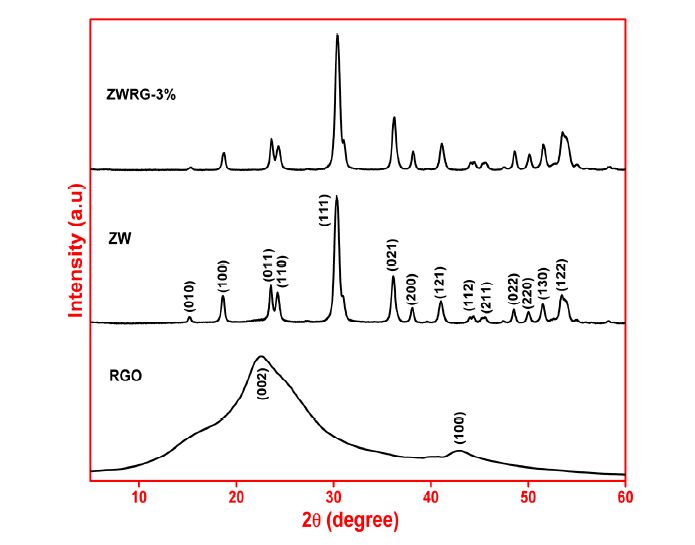
 DownLoad:
DownLoad: 